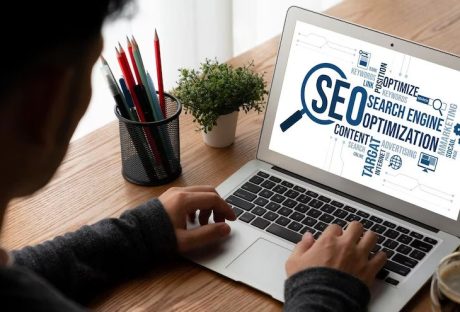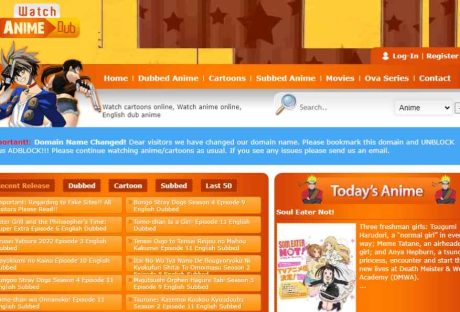Blog

Simple Ways To Prevent Insects From Taking Over Your Kitchen
No one wants to come home to a kitchen crawling with critters. Imagine coming home and seeing ants, weevils, cockroaches, and other insects moving amongst your foodstuff and utensils. If that doesn’t make the hairs on your neck stand, we don’t know what will. Not only do these insects carry germs and other harmful substances, but they also have a distinctive odor that lingers even after they leave. Pests can chew through boxes and plastic containers; some can even chew through metal. They can also contaminate food and surfaces, and they leave droppings on drawers and pantries. These pests are a nuisance that most homemakers don't want to encounter because they know how wasteful and problematic they can become. You don’t want to throw away (but you have to) cereals, pasta, and other foodstuffs that have been crawled and nibbled upon by rodents, cockroaches, and other pests, don't you? In this case, you need to look for a reputable pest control company like Top Line Pest Control to ensure there won’t be any pests in your home fast. Here Are Four Prime Steps To Prevent Insects From Taking Over Your Kitchen If you want to keep your home pest-free, here are some things you need to consider. 1. Immediate clean-up Crumbs, leftovers, and spills always attract pests inside the house. It would be best to conduct an immediate clean-up after every meal. Remove leftovers and place them in your recycling bin or trash compactor, place your dishes and utensils in the dishwasher, and wipe down eating surfaces immediately after eating. Doing this will prevent pests from making their way to your kitchen. You can also prevent pests by wiping surfaces and problematic areas with 50% vinegar, dish soap, and water. You can also use a salt and water solution to directly wipe the surface and spray on bugs. 2. Buy and stock food in cans and glass jars When you shop for your groceries, select products that come in cans. Most pests can chew through paper, cardboard boxes, and even thin plastic containers. If you stock the pantry, it will be better to stock cans or glass jars of food because pests rarely chew through these materials. 3. Check on the kitchen pipes Another way to prevent insects from coming into your home is to check the kitchen pipes. If the holes are bigger than the pipes, you have to cover them properly with sealant to prevent mice and other pests from using them as the entryway to your home. You can do it yourself by using caulking agents, glue, or expanding foam to cover such spaces, however, you can ask a pest control company to eliminate insects and pests professionally and safely in the long term. 4. Take out the trash If you don’t have waste disposal in your sink, you must take out the trash regularly. You also have to use top-grade trash bags to keep pests away. Endnotes Keeping pests away from your kitchen can be challenging. However, with a few simple methods, you can ensure your kitchen is as clean as possible. Read Also: How To Choose the Right Brass Range Hood for Your Kitchen Know About The Type Of Kitchens According To Different Size Different Styles of Kitchen Cabinets
READ MOREDetails
Is Medical Specialities A Good Career Path? – 12 Best Jobs
Many people ask, “is medical specialities a good career path?” Medical careers may be satisfying since you strive to provide top-notch patient care. In the healthcare sector, there are many different positions, some of which have minor qualifications and others requiring several years of school and training. Job routes in the medical industry may best meet your goals and capabilities. In this post, I have outlined 12 potential careers and job positions you can work towards in medicine. Why Is Medical Specialities A Good Career Path? If you ask me, “is medical specialities a good career path?” I would definitely say yes. This is because there are various job benefits like: 1. Work Variety You can supervise others, deal directly with patients, or do administrative work in this sector. There are several medical specialties, so you may pick one that most appeals to you. A medical career path can also be continued by selecting a position that requires little training and education, then progressing through promotions for various tasks. 2. Lots Of Opportunities You may choose from various career routes in this industry, and most of them provide several prospects for advancement and managerial positions. If you decide to pursue a job in healthcare, you could be able to do so for the duration of your career. 3. Flexible Schedules Several healthcare institutions are open around-the-clock, allowing for various shifts to provide the most excellent patient care. You can work different shifts to fit your schedule if you intend to deal directly with patients. 4. Job Security The fastest-growing professions today include several roles in the healthcare industry. Those in the medical sector should anticipate job stability long into the future because some medical positions are expected to rise by 33% between 2018 and 2028. Best Medical Specialities Jobs In 2023 The reason why people ask, “is medical specialities a good career path? It’s because of various high-paying jobs like the ones I have stated below: 1. Veterinarian Average Annual Salary: $95,000 A veterinarian performs physical examinations on animals, makes a medical diagnosis, and treats and medicates them. They operate on animals and administer vaccinations. They also conduct health examinations and educate pet owners with knowledge about preventive care. Veterinarians might choose to focus on one particular kind of animal or treat a wide range of them. 2. Veterinary Assistant Average Hourly Salary: $13 The pet is sent to an examination room by a veterinary assistant, who also takes the animal's weight and vital signs. They support radiological operations and aid in calming the animal during the veterinarian's examination. Moreover, they prepare drugs, sanitize surgical equipment, and prepare the operating room. Also, they provide comfort for troubled animals and provide nighttime care. 3. Dietary Aide Average Hourly Salary: $11 Planning, preparing, and providing hygienic meals and beverages are the duties of a dietary assistant. Also, they need to inventory food supplies, monitor food temperature, and store goods properly. The eating areas and utensils must also be cleaned. 4. Patient Care Technician Average Hourly Salary: $14 A patient care technician makes rounds of the patients, assesses their status, and informs the medical personnel of any requirements. They also carry out non-essential medical and therapeutic treatments, as well as laboratory analyses of material that have been gathered. 5. Nursing Assistant Average Hourly Salary: $14 A nursing assistant supervises patients' meals, assists with primary care and treatments, and may even clean the facility. In the case of an emergency, they also notify the medical staff. A CNA helps patients with regular meals, exercise, and personal cleanliness. They tend to them, record their vital signs, and fill their charts. They assist the physicians, nurses, and other medical personnel as needed. If you are looking for experienced and licensed physicians to book your next medical appointment, take a look at WellcomeMD to get the best services. 6. Medical Assistant Average Hourly Salary: $15 A medical assistant keeps patient records up to date, handles office work, helps manage the medical inventory, and helps place orders for fresh supplies. Moreover, they guarantee that the exam rooms are pristine and ready to accept patients. 7. Athletic Trainer Average Hourly Salary: $22 Collaborating with doctors and occupational therapists, an athletic trainer analyzes and assesses patient sports-related injuries and develops a treatment and training regimen. They handle patient documentation and keep track of patients' progress. They could attend to the patient at a hospital or a rehabilitation facility, or in their home. 8. Nutritionist Average Annual Salary: $52,000 A nutritionist assists customers in creating a balanced food plan to suit their nutritional needs, shed pounds, and build muscle. To help people make better food decisions, they can also maintain a webpage regarding dietary practices. 9. Licensed And Registered Nurses Average Hourly Salary: $30 A nurse provides medical care to individuals of all ages and with various health requirements in nursing homes, clinics, community centers, and hospitals. They administer drugs, run medical equipment, perform diagnostic procedures, and keep track of patients' vital signs. They collaborate with physicians, nurses, and other healthcare workers to track patients' medical records. On the other hand, a licensed practical nurse performs average patient care in clinics, hospitals, and private employment settings. They aid medical professionals, including physicians and registered nurses, during examinations and treatments. They keep tabs on the patient's development and alert the doctor if anything goes wrong. 10. Health Administrator Average Annual Salary: $72,000 A health administrator manages a healthcare organization's workforce and operations. To enhance patient care, they put healthcare policies into place and monitor healthcare systems. They oversee the organization's finances, follow the law, and interact with the healthcare industry, the government, and investors. They are also actively hiring employees. 11. Physical Therapist Average Annual Salary: $82,000 In collaboration with the patient's doctors, a physical specialist is in charge of creating and carrying out efficient treatment and care programs. Every two years, they must update their training regimen with a minimum of 10+ hours of continued education. They must also help administrative employees with billing and reporting questions and aid with state physical therapy laws. 12. Occupational Therapist Average Annual Salary: $40,000 An occupational therapist analyzes, assesses, and develops treatment programs for patients who are ill, wounded, or incapacitated to assist them in performing daily activities. They help them with physical activity, keep tabs on their development, and suggest making their surroundings more bearable. They might speak with medical professionals and caretakers and work together. Conclusion So, is medical specialities a good career path? The answer is yes. Individuals who are passionate about medicine and want to make a big difference in people's lives can consider a career in one of the medical specialties. Although the industry may have its share of difficulties, the potential benefits and the chance to work in a continuously changing industry make it a popular and alluring career choice. 7 Health Tips For Medical Students Is Health Care A Good Career Path? Is Medical/Dental Instruments A Good Career Path
READ MOREDetails
How To Play Roblox Unblocked? – Completed Guide [2023]
If you are a school student, you might be tempted to play Roblox. It is one of the most famous games amongst school kids, after all. However, the Chromebooks issued by your school has several blockers in them that block Roblox. Therefore, playing Roblox unblocked is the only way to do so. If you are facing this scenario but you want to play Roblox badly, you need to read this guide. Here, I will teach you three ways to unlock and play Roblox without any restrictions! Play Roblox Unblocked Using Proxy Websites Image Source: nortondns.com Proxy servers function similarly to VPNs. The main distinction is that, unlike VPNs, they do not employ an encrypted connection. Proxy servers instead route the traffic through another website. Simply use the proxy browsers to look for the game rather than a standard Google search. This implies that your school's administration might continue to be able to identify your specific internet activity. There is, however, a fix for it. Nebula is a well-known UltraViolet-based proxy that you may use to play Roblox Unblocked. Follow the steps explained below to play Roblox Unblocked using Nebula: First, search for Nebula Proxy Websites. Now, you will find many websites that link to Nebula proxy sites. However, I would suggest choosing one from GitHub since they are the most secure. In addition, they are the most likely to work compared to Nebula links from other websites. When you enter a Nebula proxy site, you will notice that it has a search box pretty similar to Google. Therefore, click on it and type in Roblox before pressing Enter. When you do so, the proxy website will open a second tab in your browser. This will show all the search results for Roblox using Google search. Now, click on the first result that appears - the official Roblox website. Here, you can sign up to create a new account or simply log in with your existing account to play Roblox unblocked at school. Play Roblox Unblocked Using A VPN Image Source: cdn.mos.cms.futurecdn.net Apart from Nebula proxy sites, you can play Roblox unblocked no download hacked, by changing your IP address. But how do you do so? Well, it's pretty simple - using a VPN! Every Chromebook that is connected to the internet has a different IP address. Your school's administrators often prevent your school Chromebook's IP address from accessing different gaming sites. Just one of them is Roblox. Essentially, a VPN hides your actual location and encrypts all of your data. Therefore, you may use a VPN to connect to various IP addresses of your choice to play Roblox Unblocked. 1. NordVPN Image Source: www.anonymistic.com NordVPN is one of the most popular VPNs for unblocking Roblox on a school Chromebook. Due to its NordLynx protocol, this feature-rich technology provides incredibly fast connectivity. Also, you may use its AES encryption and DNS leak prevention capabilities while selecting from more than 400 servers. Also, the program runs on practically every OS, including Android, iOS, Windows, Mac, and FireTV. 2. ExpressVPN Image Source: www.reviewsfire.com This program is the finest VPN for Roblox in class because of the Propriety Lightway protocol. You may use this function on your school Chromebook to make private video calls and stream your gaming sessions. In addition, ExpressVPN offers 3000 servers spread across 94 nations, AES encryption, and a kill switch. It works on Windows, Linux, Mac, iOS, and Android. 3. SurfShark Image Source: cdn.mos.cms.futurecdn.net Use SurfShark to search for a VPN program that won't break the bank. Together with reasonable prices, the app provides a very safe browsing environment. Its lightning-quick WireGuard allows you to lag-free broadcast Roblox and other games in HD. Institutions now know how students access banned websites on their school-issued Chromebooks using VPNs. Due to your school's firewall settings, many of you could find yourself not able to use even these VPN programs. 4. CyberGhost Image Source: www.pockettactics.com CyberGhost is another well-liked VPN for unblocking Roblox at school. It is also user-friendly for beginners. Hence, CyberGhost will make using a VPN program quite simple regardless of whether you've never used one before. It's excellent for unblocking Roblox due to its WireGuard function. You will have a lot of options with more than 7,000 servers to choose from. Also, this software is supported across all platforms. Play Roblox Unblocked Using Now.gg Image Source: thenerdstash.com Apart from using a Nebula proxy website and a VPN, one of the best ways to play Roblox unblocked at school without downloading is through Now.gg. But before we can dive into using Roblox Now.gg, let me explain what this platform is actually about. Now.gg is a website that hosts many video games in cloud storage. Therefore, if you play games from Now.gg, you don't need to download them to your device. This will allow you to play Roblox directly from the browser that you are using. Therefore, to play Roblox Now.gg from your browser, follow these steps as I have explained here: First, go to the website Now.gg. Here, search for Roblox. Now, you will be taken to the Now,gg Roblox page. Here, click on Play Roblox to start playing Roblox through your browser! However, due to constant updates to the Roblox base game and the Now.gg website, this option might be unavailable. If you are on a PC, then you will be shown the option to Play On BlueStacks or Download BlueStacks instead. If you get these options, then you will have to do as told - Play Roblox using BlueStacks. In case you didn’t know, BlueStacks is an app for Windows computers that allows you to run Android apps on your PC. Therefore, instead of opening Roblox PC, you will be playing the Roblox Android version instead. Conclusion Playing Roblox Unblocked on your school’s Chromebook or anywhere is not as difficult as people think it is. All you need to do is follow the three different steps that I have stated over here. First, you can play Roblox using a proxy website. Secondly, you can also unblock Roblox using a VPN. Last but not least, you can play Roblox on the browser using Now.gg. If you have any queries regarding this topic, feel free to comment down below! Read Also: Bored So Much: Learn How To Play Games On Messenger How To Download Game Of Thrones Putlocker Online For Free? Poppy Playtime’s Huggy Wuggy – Should Children Play This Game?
READ MOREDetails
Why Is An SEO Services Company Better Than Others?
Search engines are currently the best alternative for attracting visitors to your website. Unfortunately, search engines need a hand in increasing your website's rank. The SEO services applied to a website are a challenge. When discussing online strategies, you need to know that many methods and tricks will help you improve your ranking. However, just like in social media marketing, you can spend unnecessary time on SEO optimization services if you don't have experience in the field. And here is where an SEO services company comes in because without experts caring about your website, you will have to wait a little longer until you see the desired results. What Are SEO Services? Those with websites use search engine optimization to influence them. Search engines must find, index and rank optimized pages above competing sites. There are currently a few major search engines such as Bing and Yahoo, but the majority of Internet searches, approx. 80% are done through Google. As a result, most SEO tips you'll come across in SEO services are toward getting noticed and ranked by Google. Almost all SEO agencies have services that comply with the requirements of the Google search engine. However, others, companies, or individuals cannot keep their customers because they use SPAM to try to manipulate Google's search engine. Google estimates that 70% of all SEO service providers have never understood the Google algorithm and have yet to learn how to rank a website naturally. In other words, these providers are based on quantity, not quality - they sell so-called SEO strategies to as many customers as possible at reasonably low prices. No book, course, video, blog article, or any other source is available where strategies that work can be learned. These SEO strategies are proprietary and too valuable to give anyone at any price. Thanks to these SEO strategies, which companies apply, clients can dominate the local or national market. An SEO Services Company Follows Google's Rules SEO services are applied depending on the company's field of activity. Thanks to some SEO tests, a monthly promotion fee can be established for any website model through checks at the website level. Of course, an SEO services company that wants to be serious will respect Google's rules because it cannot afford to take risks, especially regarding a company's website! GAMIT will constantly develop clean and ethical SEO strategies that work long-term. That is very important for any professional company! Anyone who still uses dubious methods or SPAM knows very little about SEO or what SEO is. How Do You Know if an SEO Strategy Is Working? First, you need to track all kinds of SEO statistics and use powerful software to track a website's position for different search terms. You will receive free access to such software from the SEO agency you hired for SEO services and can follow your website's evolution. When you apply SEO strategies for a particular field of activity, your website will oscillate until the rankings stabilize. That is quite normal. If your website suddenly drops in the ranking, you must be patient. You will find that your site will be back again in the next few days. How Do You Apply SEO Strategies? SEO is not magic; it is simply experience. Experts optimize your website – content, speed, metadata, page structure, technical stuff, etc. Social networks such as Facebook, Twitter, YouTube, and other authorized sites are used to promote a website. It would be best if you remembered that Google wants the most relevant and authoritative sites to be in the first organic results. You must ensure that your site complies with Google's search engine rules. An SEO services company can offer individual SEO services, but you need to understand that SEO services are made up of many parts that interconnect and need each other. Therefore, providing full SEO services in individual elements could be more helpful. Often, Web designers do an "on-page SEO optimization," but this optimization is only a tiny part of what you should do for a top position in Google. According to some specialized websites and specialists in this field, only SPAM and other unconscious people give such guarantees. You could guarantee something like that if you had control over Google or something there! Should You Invest in SEO or Advertising? If you have the necessary budget, it is recommended to use both services. A top 3 position in Google brings more visitors to your website than the advertising spots above. Combining SEO and paid ads makes you get the most traffic. SEO usually takes 4-6 months to get you on the first page of Google, so it's worth running ads early on to get visitors to your site in the meantime. You have to consider that every click on an ad costs money, while organic visitors (non-ad clicks) are free and only cost as much as the SEO services applied. There are many times when people come and complain that the last SEO that they have done was done for nothing. For many customers, experts must first fix what other people have broken. Before you start working with another SEO agency, consider that they will first analyze the website and determine whether or not you need to create a new website. Sometimes a website has been destroyed too much by applying SPAM services. In such a case, it makes more sense to start promoting on another domain name. In general, you have to wait between 3 and 6 months to get and stay on the first page of Google. At that point, clients always make more money than they invest in SEO. To achieve a top 3 position or even position 1, you need to be patient and let the SEO services company do its job. Getting to the front page is slow and can take another 3-6 months! Of course, occupying the first positions in Google can work much faster. A testing time is usually needed for larger projects or intense competition. However, it can happen very quickly in the case of a few competitors! Basic Rules for Optimizing a Website The first rule in optimizing a website for search engines is to give it value. You need to provide precise data about your pages to rank better in search engine results. You must demonstrate that your website is better than your competitors. There are many strategies, tactics, and best practices to achieve this, but the most important thing you can do is optimize your content. Make sure everything you own and control is simply excellent and relevant. Also, remember that search engines will rank the most important and relevant pages. What does this mean? That you, as a visitor, will be able to see the relevant pages that will appear as a result of search engines based on their importance and authority. A page's authority can be increased by adding internal links and backlinks. By hiring SEO services, you will get the help of real specialists at a fairly reasonable price. A professional representing your brand or business is the best way to get off on the right foot in today's market. Remember the importance of compatibility with mobile devices. You can talk to SEO specialists about design and ways to promote your website. Web Promotion, an Indispensable Service An SEO services company will offer web promotion tactics, actions, and techniques that generate organic traffic (visitors) to your website. Nowadays, web pages provide numerous benefits to business owners. For some online businesses, websites are storefronts for selling goods and services. Others make money through advertising, sponsorships, and affiliate marketing, such as blogs. In online business, it is evident that a website is necessary. But how will your website be impacted? After all, you compete with millions of other web admins, trying to secure a profitable position in the existing market. Web promotion service is quite a problematic service nowadays. This SEO service is primarily aimed at increasing organic, unpaid traffic. The more targeted your organic traffic (visitors that match your target market), the more likely you are to generate customers for your services or products. Whether you have a freelance business, a blog, or an online store, you need to do web promotion to let people know about the services or products your company offers. The main goal of the web optimization service is to attract organic traffic, but in addition to the number of visitors, you need a target audience! The purpose of applying this service is not only to increase traffic but also to sell products or services. Experts use search engine optimization strategies. Don't think you will spend a fortune on an SEO services company or hours and hours of SEO study. However, they can help you move to the top of organic results by paying affordable prices for professional services that will help your business thrive. Read Also: How To Get A Trusted SEO Company In 2023? Vancouver Search Engine Optimization Agency Helps Your Digital Marketing and SEO Efforts
READ MOREDetails
Factors to Weigh in Before Investing in a PCR Robot
If you are primarily new in the field of investment and do not have a good idea about which factors you should weigh in, then we are here to help you. We understand that it can be a bit confusing to get the right PCR robot. Because of this, we are here to guide you with some of the most important factors you need to weigh in. Once you have a good idea, it should not invite a lot of trouble. As many of you would know, the PCR robot is highly effective and a very important requirement in most science laboratories. Important Features to Weigh in Before Investing in PCR Robot: Some of the most important features that you need to look forward to when it comes to investing in a PCR robot are: 1. UV Light Inclusion Not many people know this, but when it comes to your PCR robot, one of the very important requirements is to have a UV light. It will give you much better precision and hence will make the work accurate as well. 2. Better Pipette Tips One of the major reasons we would invest in this particular robot is to increase the accuracy level. It is because of this reason that you need to make sure that the tips of the pipette are extremely highly functional. If you choose us at Flow Robotics, you will notice that we tend to use 200µl pipette tips and 1000µl pipette tips. 3. Support The form of the robot we are talking about here is extremely new, so it tends to raise a lot of confusion. You need to ensure you are under someone who can aid you. The robot comes with an extensive program from us and is highly accurate. Summary For the most accurate and affordable PCR robot with exemplary skills, contact us at Flow Robotics today. It is our onus to do the best work for you! Additional: Getting a Return on Investment From Using a Trade Show Booth Top 5 Investment Decisions You Need To Make In Your Thirties What Investors Should Know about Investment in Gold and Silver Assets 5 Reasons Why Bitcoins Are Considered Reliable Investments
READ MOREDetails
Poppy Playtime’s Huggy Wuggy – Should Children Play This Game?
I was surprised to find that parents are scared that their children might come across Huggy Wuggy in Poppy Playtime. This fuzzy-blue character from the game seems alright to me. Therefore, I decided to give this game a try. And now, I understand why parents are concerned with this game. There is, however, nothing to worry about in the slightest. Let's see what this ruckus is all about. What is Poppy Playtime? Image Source: static1.srcdn.com Poppy Playtime is one of the latest additions to the ever growing list of horror games based on children's concepts. This game was released in an episodic style and was inspired by other episodic horror games like Five Nights at Freddy's. The game’s first episode was released in October 2021, with the second charter being released in March 2022. After the release of its first episode, this indie-horror game quickly gained a lot of popularity, especially due to various Poppy Playtime TikTok reels going viral. This sudden jump in popularity made this game land under the radar of big Twitch streamers and YouTube content creators, which made it even more popular. In this game, all the staff of the Playtime Co. toy factory inexplicably disappeared, leaving you stranded within. Now, you must get out of there quickly. However, things are more complex than they sound. You quickly discover that the toy factory has been abandoned because the toys are alive. Not only are they creepy, but they constantly crave human blood due to a previously failed experiment on them. Now, you must use your wits to survive bloodthirsty toys and dolls. I swear Chucky would have been proud to be here, commanding a legion of murderous dolls behind him! Who Is Huggy Wuggy? Image Source: static01.nyt.com No matter how creepy and unsettling the atmosphere of the game is, its star attraction will always remain to be the nefarious Huggy Wuggy Poppy Playtime. Introduced in Chapter 1 of the game, Huggy Wuffy appears to be the main antagonist of the game. He is the big bad monster of this game that you should be running from at all times. More or less, he reminded me of the Xenomorph from Alien: Isolation. This furry, 10 feet tall blue Teletubby appears to be the main mascot of the company Playtime Co. However, despite his fuzzy and cute appearance initially, he can be the scariest toy you have ever seen, especially when he opens his mouth and reveals his blood-soaked fangs. One of the main aspects of Huggy Wuggy that makes him famous is the abundant jump scares he provides people. He often appears at the darkest depths of the factory and typically creates a bloody mess most of the time. His sudden appearances in the game have made him a famous attraction for gaming content creators. There are numerous montages and reaction videos where gamers get heart attacks after unexpectedly spotting him on television. What Parents Should Know Image Source: www.fox21news.com After seeing all the TikTok videos and various YouTube videos, many parents have voiced their opinions regarding this game. Most of their concerns about this game steam from experiences their children might have with Huggy Wuggy. The main reason parents are talking about this game is because of its horror elements. At various parts of the game, from abandoned rooms to suffocating air vents, Huggy Wuggy will chase you around the plant. Along the way, there are various instances where you can see lots of blood and guts smeared on the floor. Although there are no scenes in this game where players are brutally murdered or beheaded by Huggy Wuggy, the sheer volume of blood smears on the walls was enough to make many parents scream "Blasphemy" at the top of their lungs. Children viewing various fan-made YouTube videos added to the severity of all these worries. In such videos, creators took the liberty of showering Huggy Wuggy as the flash-ripping monstrosity he is. Since Huggy Wuggy is a character from a “children's video game,” YouTube has applied no age restrictions on these videos. Therefore, minors and pre-teens using YouTube quickly found these videos after searching for Poppy Playtime. This exposed them to the seedy side of growing up, where your innocence is put to the test by obscenity and profanity. In addition, YouTuber TryHardNinja composed a song as a tribute to Huggy Wuggy, titled “Free Hugs.” Because Poppy Playtime's ESRB Age Rating tag indicates that it is appropriate for 8-year-olds, YouTube assessed it to be "kid-friendly". However, the song itself is far from it. In this song, Huggy Wuggy sings about his darkest desires of - you guessed it right - eating human flesh and drinking human blood. While I would have loved such content and lattice as a five-year-old (I was weird even as a child), modern-day children might not. This is why their parents are afraid that their children might turn into adults a bit too soon. Should Children Play This Game? Image Source: www.klicksafe.de Children should play Poppy Playtime. It's a great game with various dark and gruesome undertones in its creepy setting, with engaging and thoughtful encounters. Yes, there are sights of blood and other “adult stuff” here and there, but that shouldn’t detract your kids from playing this game. If they can watch horror movies like the Evil Dead and The Conjuring, why not play this game? However, I do get your concerns as a parent. But I also do believe that, as children, we all deserve to have some liberty and free will. Therefore, if your kid is playing this game, you can keep an eye on them and play this game with them. This can turn horrific experiences into great family-bonding activities! Plus, if I were a parent, I would have gifted my children Huggy Wuggy toys and Huggy Wuggy plush pillows! Read More: Top 6 PC Games in History Which You Should Definitely Try Children Love Huggy Wuggy, But Should They? Image Source: www.naturalbeautywithbaby.com A deceptively well-designed character from Poppy Playtime is Huggy Wuggy. While it appears as a harmless toy at first, wait till it opens its mouth. If it does so, you better run because it will keep chasing you wherever you go. Many parents are concerned with the traumatic shock this horror game and character might have in store for their kids. Despite this, I still recommend parents allow their children to play this game. If you are still concerned, play it with them. You will love it too. Read Also: 8 Ways For Computer Games to be Educational Techniques How To Download Game Of Thrones Putlocker Online For Free? What Makes FIFA Mobile Game So Preferred Among Cellular Users?
READ MOREDetails
Common Misconceptions About Medication Assisted Treatment Programs
If you or a loved one is struggling with substance abuse, you may have heard about medication assisted treatment programs as a potential tool for recovery. However, many misconceptions and myths surrounding these programs can prevent people from seeking the help they need. Moreover, this blog post will address some of the most common misconceptions about medication-assisted treatment programs and provide evidence-based information to help set the record straight. What Are Medication Assisted Treatment Programs? First, let's define what we mean by "medication-assisted treatment program." Medication-assisted treatment (MAT) is a holistic addiction treatment. It uses medications, counseling, and behavioral therapies to help people with substance use disorders (SUDs) achieve and maintain recovery. The medications used in MAT are approved by the FDA. These medications are safe and effective for treating substance use disorders. Some medications commonly used in MAT include methadone, buprenorphine, and naltrexone. MAT is a proven, effective medication assisted treatment for addiction. However, many people don't have access to quality care. Confidant Health is changing that. Confidant provides expert help for medication assisted treatment through our confidential and discreet app. Now, let's address some of the common misconceptions about MAT programs. Before searching for medication assisted treatment near me, it will be better to see which are the best nearby locations from your place. Misconception 1: Medication-Assisted Treatment Programs Are Just Substituting One Addiction For Another One of the most persistent misconceptions about medication-assisted treatment programs is that they substitute one addiction. The idea is that medications like methadone and buprenorphine replace one drug with another, and people who use them are not "sober." FACT: This is a misunderstanding of how medication-assisted treatment programs work. The medications used in medication assisted treatment are carefully prescribed and monitored by trained healthcare professionals. They help manage withdrawal symptoms and reduce cravings, which can be powerful triggers for relapse. Additionally, the medications used in MAT are designed to be long-acting. This means they do not produce the same "high" that people experience when using drugs like heroin or prescription opioids. This makes it less likely that people will misuse the medications or become addicted to them. Research has consistently shown that medication-assisted treatment programs effectively reduce drug use and improve outcomes for people in recovery. The National Institute on Drug Abuse (NIDA) notes that MAT "can help sustain recovery." Misconception 2: Medication-Assisted Treatment Programs Are Not Effective Another common misconception about medication-assisted treatment programs is that they are not effective. Some people believe that medications are just a "band-aid" solution that does not address the underlying issues contributing to addiction. FACT: Studies have shown that medication-assisted treatment programs can significantly improve outcomes for people with opioid use disorders. For example, a 2018 study published in the Journal of Addiction Medicine found that people who received medication assisted treatments were more likely to remain on the treatment and achieve abstinence from opioids than those who did not receive any treatment and medication. Moreover, opioid use disorder medication is often used with counseling and behavioral therapies, which can help people address the underlying issues that contribute to addiction. Medication-assisted treatment programs can help people achieve and maintain recovery by providing a more holistic approach to treatment. Misconception 3: Medication-Assisted Treatment Programs Are Just A Way For Drug Companies To Make Money Another common misconception about medication-assisted treatment programs is that they are just a way for drug companies to make money. Some people believe that the medications used in medication assisted treatment are overpriced and that the programs are being promoted by pharmaceutical companies solely for profit. FACT: This is not an accurate portrayal of medication-assisted treatment programs like the 15-minute4me test. While it is true that pharmaceutical companies manufacture the medications used in MAT, they are not exclusively used for addiction treatment. Many medications used in MAT also have other medical uses. Furthermore, the cost of medication-assisted treatment programs can be offset because they are often less expensive than other types of addiction treatment. For example, inpatient rehab programs can be costly, whereas medication-assisted treatment can be provided on an outpatient basis, which can be more affordable. Misconception 4: Medication-Assisted Treatment Programs Are Just A Way To Get High Legally Some people believe that medication assisted treatment programs are just a way to get high legally. They may think that the medications used in MAT produce a similar euphoric effect as illegal drugs and that people are just using them to continue their addiction in a more socially acceptable way. FACT: As we mentioned earlier, the medications used in MAT are designed to be long-acting and do not produce the same "high" as drugs like heroin or prescription opioids. While it's true that some people may misuse their medications or use them in ways that are not prescribed, this is not the norm. Additionally, healthcare professionals will closely monitor people participating in medication-assisted treatment programs. They can detect any misuse or diversion of medications. If someone misuses their medications, they may be tapered off or removed from the program. Dispelling Misconceptions About Medication-Assisted Treatment Programs: Why They Are a Valuable Tool for Substance Abuse Recovery Medication assisted treatment programs are a valuable option for addressing substance abuse. It can help people achieve and maintain recovery from this debilitating condition. Unfortunately, there are misconceptions and stigmas surrounding these programs. These misbeliefs can prevent individuals from seeking the appropriate help they need. However, we can help break down these barriers by understanding the facts about MAT programs. We’ll be able to ensure that everyone who needs help for substance abuse can access the right care. Remember, medication-assisted treatment programs are an evidence-based approach to addiction treatment. It is a science-backed treatment option that can help improve outcomes and save many lives. Medication-assisted treatment programs are valuable for addressing substance abuse. And helping people achieve and maintain recovery. Unfortunately, many misconceptions and myths surrounding these programs can prevent people from seeking the help they need. Bottomline By understanding the facts about medication assisted treatment programs, we can help break down these barriers and ensure that everyone who needs help for substance abuse can access the care they need. Remember, medication-assisted treatment programs are an evidence-based approach to addiction treatment that can help improve outcomes and save lives. Additionals: Overcome Addiction in California 4 Tips To Find An Effective Drug Therapy 3 Key Steps Of Addiction Treatment To Help You Get Sober
READ MOREDetails
WcoStream: Is It Legit? Is It Safe To Watch Anime Here?
Among the various websites that are well-liked by anime enthusiasts, WcoStream is one of the most popular ones. The service allows you to view and enjoy your favorite anime without spending a thing. Sadly, many anime streaming services operate in a gray area of the law. Some of these websites are also obvious frauds that won't think twice about stealing their customers' cash or private information at first chance they have. Hence, if you're a passionate anime lover, you must proceed cautiously before accessing any anime streaming portal. Therefore, read this guide to understand how to access this website and watch anime online for free without any worries! What Is WcoStream? Image Source Users may watch their preferred anime for free on WcoStream, an internet streaming service. The website was only established in 2019, making it relatively recent. Nonetheless, WcoStream has seen a steady rise in traffic recently, mainly because of its free streaming options. The extensive collection of anime that this website keeps up is another factor in its appeal. Also, it hosts anime movies on occasion, which could make it a favorite among those who enjoy movies. How To Register For WcoStream? In order to register on WcoStream, here are the steps that you need to follow: Visit the official website of WcoStream. Click on the option that reads Register located at the upper right corner of the page. On the Registration window that appears on the screen, enter the preferred registration name that you want. Enter your email address where you would like to receive mail from the platform. Set your password. Make sure that it is strong enough. Enter your first and last name on the panel. Click on the option that reads “Register.” Congratulations! You have finally created our account. How To Stream And Download Anime From WcoStream? It is easy to stream and download anime episodes and movies from WcoStream. Although its UI can be cluttered according to user preferences, it can still be easily navigable. However, do note that there is no Wcostream app or WcoStream apk. If you wish to watch and stream anime from this website, here are the steps that you need to follow: First, create a secure connection using any VPN tools. For this, I suggest using NordVPN since they are one of the best VPN tools in the market. After establishing a secure VPN connection, it's time to visit the website www.wcostream.com. After you open the website, you will land on its homepage. Here, you will get various anime recommendations. These recommendations are typically new anime and often include the trendiest ones too. Alternatively, you can search for any specific anime you wish to see on the search box at the top of the home page. After selecting an anime you wish to watch, its episode and seasons list will open up. Pick the episode you wish to watch by clicking on it. Now, you will be redirected to the page where you can watch the episode. If you wish to download it, there’s an option to do so below the player on the page itself. Simply click on it if you want to do so. After clicking on the download button, you will be redirected to another page from where your downloads will start. You must select the folder destination to download the anime episode in your storage. Is WcoStream Safe? Is WcoStream Legal? Although being exact, the WcoStream anime website is illegal. This is because it does not possess anime copyrights. It is actually a pirate site to view and download anime without paying anything. In addition, the website's webmaster does not own any anime series or movies shown on the website. Therefore, the legal team of the series can have the site blocked at any time. It's crucial to know that this website is illegal and depends on advertisements. Some of the advertising may include dangerous viruses that damage your device (often called adware). In addition, there may be lags and network server errors while watching anime on this platform. Do You Need To Pay To Enjoy WcoStream? You don't need to establish a profile to use WcoStream because it is entirely free. Through the platform's homepage, you can instantly access content. However, some functions of the website might require a login. Having said that, it is mandatory that you create and register yourself as an authentic user of the platform to enjoy the services of the site. Is There A WcoStream APK? YES, that is the shortest answer to this question. The app for WcoStream is rather popular. The Wcostream App stands out as a top-tier anime streaming app, offering a diverse array of genres like romance, horror, science fiction, and comedy, both online and offline. With this app installed, you can bid farewell to the need to visit the website to enjoy manga and anime content. If you wish to avoid ads, which may be bothersome, consider opting for the premium version of Wcostream APK. Whether you go for the free or subscription-based option, this application offers an excellent means of indulging in non-stop entertainment through animated series. How Does WcoStream Make Money? When considering anime streaming services, concerns about validity may arise. Many people might question the legitimacy of WcoStream. In essence, the assertion holds true, although this heavily relies on the criteria used to establish a website's legitimacy. WcoStream's authenticity is substantiated by its registered domain name. An added benefit of WcoStream lies in its provision of lawful services. Users can access various anime and cartoons on the WcoStream website. Besides its legality, there are numerous additional advantages to choosing WcoStream as your primary anime streaming platform. The platform boasts an extensive collection of anime, cartoons, and even movies. Furthermore, all content available on WcoStream's platform is freely accessible. This serves as the website's main selling point. The prospect of enjoying your favorite anime without charge presents a compelling reason to opt for the WcoStream streaming service. Best Alternatives For WcoStream For Watching Anime Is Wcostream not working for you? This can happen for various reasons, ranging from needing a proper VPN connection to the website being blocked in your country. In addition, the site often goes into maintenance mode, where all users are prohibited from entering the website. Therefore, in such dire situations, you can watch anime from various Wcostream alternative websites, most of which are free. 1. Zoro.to In 2023, Zoro.to emerged as one of the best anime streaming websites for Otakus and Weebbs. Unlike other anime streaming websites, this site is not blocked in most countries. Therefore, it is one of the most easily accessible anime streaming sites. Named after the character Zoro from One Piece, this site allows you to stream anime episodes from various servers. In addition, you will see fewer advertisements throughout your entire streaming session compared to other free anime streaming sites. 2. KissAnime KissAnime has been in the mouths of every otaku not from Japan for many years. Considered to be one of the OG free anime streaming websites, it has now become the biggest compared to all. It got so big that the developers have now developed various sibling sites like KissAsian (for Korean dramas), KissHentai (you guessed it right), and more! However, several issues like unstable servers, an unending stream of advertisements, and more have recently plagued the site. This has led to an overall decline in its popularity and traffic. 3. Crunchyroll Crunchyroll is by far the best website for watching anime. However, unlike the other sites I have mentioned in this post, this site has a premium version. Crunchyroll is the first site that comes to everyone's mind if asked about the best website to watch anime legally. It has a free version, where you will be bombarded with ads twice per episode. This forces everyone to subscribe to the premium version eventually. Conclusion WcoStream is a popular anime website with an extensive collection of anime and cartoons you can watch for free. While this site is blocked in most countries globally, you should use a VPN to access this site. If you cannot access this site, you can take the help of other sites like Zoro.to, KissAnime, and Crunchyroll. These are also great sites to watch anime for free! If you know about any other anime websites, share their name in the comments below! Read Also: Animix Play Review – All You Need To Know 3 Reasons Dragon Ball Z is the Best Action Anime Show What Is Reaperscans? Is It Illegal? How To Find Comics On It?
READ MOREDetails
Full Guide To Throuple Relationships: Rules & Tips
A throuples is a romantic and sexual relationship between three consenting adults. It can be a triad of three people in a relationship with each other or a couple who bring in a third partner to form a throuple. The ties can be heterosexual, homosexual, or bisexual, depending on the sexual orientation of the individuals involved. Throuple relationships have become more accepted and visible in recent years as society becomes more open to non-traditional relationship structures. Throuples typically share a deep emotional connection and intimacy, and they may live together, share finances, and raise children. Throuple relationships can come with challenges, such as jealousy, communication issues, and societal stigma. However, with open and honest communication, clear boundaries, and a willingness to adapt and grow, throuple relationships can be successful and fulfilling for all involved. Before we move on to the rules, let us just give you a small explanation of Throuple Vs. Polyamory Vs. Open Relationship, so that you don’t get confused. Throuple Vs. Polyamory Vs. Open Relationship Throuple, polyamory, and open relationships are all types of consensual non-monogamous relationships, but they differ in their structure and dynamics. A throuple is a romantic and sexual relationship between three consenting adults. It involves a committed and intimate relationship between all three individuals. The throuple may live together, share finances, and raise children together. Polyamory, on the other hand, involves having romantic and/or sexual relationships with multiple people simultaneously, with the knowledge and consent of all parties involved. Polyamorous relationships involve any number of individuals, and the relationships can be hierarchical or non-hierarchical. An open relationship is consensually and non-monogamous. Here partners agree to engage in sexual or romantic relationships with other people outside of the primary relationship. Open relationships may involve casual sexual encounters or more serious romantic relationships outside of the primary partnership. While all of these relationship structures involve consensual non-monogamy, they differ in their level of commitment and emotional intimacy. Throuples involve a committed and intimate relationship between all three individuals, while polyamorous relationships can involve varying levels of commitment and hierarchy. Open relationships tend to be more focused on sexual exploration and may not involve the same level of emotional commitment as throuples or polyamorous relationships. Rules & Tips For Throuple Relationships Throuple relationships, also known as triad relationships, are romantic and sexual relationships between three consenting adults. These relationships are becoming more accepted and common in today's society, but they come with their own challenges and rules. This guide will explore the basics of throuple relationships, including the rules and tips for making them work. Communication Is Key Communication is essential in any relationship but becomes even more critical in throuple relationships. Open and honest communication between all three partners is necessary to ensure everyone's needs and boundaries are respected. This means discussing your feelings, concerns, and desires openly and without judgment. Set Clear Boundaries Setting clear boundaries is crucial in throuple relationships. Discuss what is and isn't acceptable in the relationship, both sexually and emotionally. Each partner should be free to express their boundaries and be respected for them. Create A Schedule Throuple relationships can be complicated, and it's important to establish a schedule that works for everyone. This can include date nights, sex nights, or even alone time with each partner. Having a schedule can help ensure everyone's needs are met, and no one feels neglected. Be Open To Change Throuple relationships can be fluid, and being open to change is essential. As feelings and circumstances change, so too may the relationship dynamics. Being flexible and adaptable can help the relationship grow and evolve. Practice Safe Sex In throuple relationships, it's important to practice safe sex to protect all partners from sexually transmitted infections and unwanted pregnancies. This means using condoms, dental dams, and other forms of protection during sexual activity. Respect Each Other's Privacy Respect each other's privacy by establishing boundaries around communication and social media. Each partner should feel comfortable sharing their life with others but also have the freedom to have private moments and conversations. Seek Professional Help When Necessary If any issues arise in the throuple relationship, seeking professional help from a therapist or counselor can be beneficial. This can help resolve conflicts, improve communication, and strengthen the relationship. Closing Thoughts Throuple relationships are a valid and increasingly accepted alternative to traditional monogamous relationships. They require high communication, trust, and respect among all three individuals involved. Establishing clear boundaries and rules is important to ensure that all parties are comfortable and happy with the relationship dynamic. Throuple relationships can come with their own set of challenges, such as jealousy and societal stigma, but with open and honest communication, they can be successful and fulfilling for all involved. It's essential to remember that every throuple relationship is unique, and it's up to the individuals involved to determine what works best for them. Ultimately, the key to success in any relationship is open communication, respect, and a willingness to adapt and grow together. Read Also: The Best Dissertation Service With a Personal Manager
READ MOREDetails
The Future Of Healthcare: Adapting To An Aging Society
The aging population is a growing demographic trend that is having a significant impact on the healthcare workforce. The aging population is defined as those aged 65 and over, and it is estimated that by 2030, this demographic will make up roughly 20% of the US population. As this population continues to grow, there is an increasing demand for healthcare services to meet the unique needs of older adults. This demand is creating a need for more healthcare workers to provide quality care for this population. The healthcare industry must address this demand to ensure that they receive the care they need. The aging population and increased prevalence of chronic diseases With the aging population comes an increased prevalence of chronic diseases. Chronic diseases are long-lasting conditions that are more common in older adults, such as heart disease, cancer, and diabetes. These conditions require ongoing care and management, placing a significant burden on the healthcare system. As the aging population grows, so does the number of individuals living with chronic diseases. This trend highlights the importance of investing in the healthcare workforce to manage chronic diseases and provide quality care for this population. Growing demand for healthcare services The aging population is also contributing to a growing demand for healthcare services. As individuals age, they require more healthcare services, including preventive care, hospitalization, and long-term care. This demand is creating a need for more healthcare workers to provide care for this population. The demand for healthcare services is expected to continue to grow as this population continues to increase. The trend toward an aging population and growing demand for healthcare services highlight the need for a well-trained and educated healthcare workforce to meet the demands and ensure that everyone receives the care they need. With an online accelerated BSN, you can gain the skills and knowledge needed to have a successful career and contribute to addressing this demand. Impact of an aging population on the healthcare industry The aging population’s impact on the healthcare industry is significant and far-reaching. The increased prevalence of chronic diseases and the growing demand for healthcare services have led to several challenges for healthcare providers, policymakers, and the healthcare workforce. The healthcare industry must adapt to these changes to provide high-quality care. One of the significant challenges is managing healthcare costs. The healthcare industry must find ways to provide cost-effective care without compromising on quality. Additionally, there is a need to increase access to healthcare services, especially in rural areas, where healthcare services are often limited. The healthcare industry must also address the shortage of healthcare workers, especially in areas such as primary care, geriatrics, and nursing. Finally, the healthcare industry must prioritize the use of technology to improve healthcare delivery and patient outcomes. The aging population’s impact on the healthcare industry underscores the need for innovation, collaboration, and investment in the healthcare workforce and technology. Shortage of healthcare workers and the need for more professionals The shortage of healthcare workers is a significant challenge facing the healthcare industry. With the growing demand for healthcare services due to an aging population and an increasing prevalence of chronic diseases, there is a need for more healthcare professionals. This shortage is affecting the quality of care that patients receive, leading to longer wait times and a heavier workload for healthcare workers. Addressing this shortage requires a comprehensive approach, including investing in healthcare education, improving working conditions, and increasing salaries. Role of technology in healthcare workforce management Technology is transforming the healthcare industry, and it is also playing a crucial role in workforce management. With the increasing demand for healthcare services, technology is helping to streamline workflows, improve communication and optimize scheduling. Healthcare organizations are using technology to automate administrative tasks, such as appointment scheduling and patient registration, allowing healthcare workers to focus on patient care. Additionally, technology is helping to facilitate remote work, enabling healthcare workers to work from home or other locations. Importance of specialized training and education The healthcare industry is continually evolving, and healthcare workers must have specialized training and education to provide quality care. As the demand for healthcare services grows, there is a need for healthcare workers to specialize in areas such as geriatrics, palliative care, and mental health. Specialized training and education ensure that healthcare workers have the knowledge and skills necessary to provide quality care for their patients. Additionally, specialized training and education can help healthcare workers advance in their careers, leading to higher salaries and better job opportunities. Economic and societal implications of an aging population The aging population has significant economic and societal implications. As the population ages, there is a shift in spending patterns toward healthcare, retirement, and long-term care services. This shift places a strain on social programs such as Medicare and Social Security, and it also creates a need for new programs to support older adults. Additionally, the aging population is leading to changes in the workforce, including a growing demand for healthcare professionals and an increase in older adults continuing to work. It is essential for policymakers to address the economic and societal implications to ensure that everyone can age with dignity and receive the care they need. Policy implications and government response The government plays a critical role in addressing the challenges posed by an aging population. Policymakers must prioritize healthcare policies that support older adults, including increased funding for healthcare services and programs that support older adults. Additionally, policymakers must address the workforce shortage by investing in healthcare education and improving working conditions for healthcare professionals. The government must also address the economic implications by reforming social programs and creating new programs that support older adults. Future directions The aging population presents significant challenges and opportunities for the healthcare industry and society as a whole. The growing demand for healthcare services and the shortage of healthcare workers require a comprehensive approach that includes investing in healthcare education, improving working conditions, and increasing salaries. Technology also plays a crucial role in workforce management, enabling healthcare organizations to meet the growing demand for healthcare services. Policymakers must prioritize healthcare policies that support older adults and address the economic and societal implications of an aging population. The healthcare industry must continue to adapt to the changing needs of an aging population, and society must work together to ensure that everyone receives the care they need. Read Also: How Can A Dallas Functional Medicine Doctor Help You? How Can Healthcare Staffing Benefit You? American Healthcare and its Woes
READ MOREDetails















